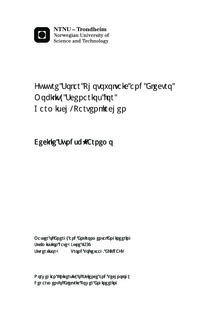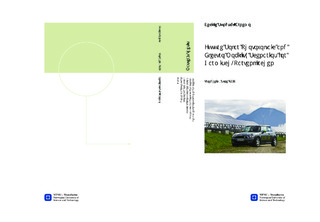| dc.description.abstract | Ever since the German Renewable Energy Act became effective in 2000, it has been a steady increase of renewable energy based electricity production in Germany. The largest share of this growth originates from wind and solar energy, where the solar energy to a large extent is utilized through small-scale distributed generators connected to the low voltage networks. This has altered the hierarchic structure of conventional electrical power systems, where power is generated at large sites, transmitted over long distances through high voltage grids, step-wise transformed down to lower voltages and reaching end-users at the lowest voltage level. Instead, the generators are connected directly to the distribution grid and surplus power from these can end up being transmitted upstream in the grid.Besides the forthcoming additional installations of distributed generators, an increase in the number of electric vehicles in Germany is expected. The charging of all these could lead to significantly larger loading for the power systems.If these two foreseen developments in the German electricity sector happen, it could introduce some challenging effects for the electricity network. Thus, it can be wise to analyze if, how or where the impact might occur.The aim of this master s thesis is to statistically evaluate the impact of future solar photovoltaic and electro mobility scenarios on the grid of Garmisch-Partenkirchen. The town is located in the very south of Germany and has an electricity supply covered 45% by photovoltaics. In addition, it is a model community for electro mobility.A futuristic Monte Carlo simulation model was developed. Based on a database containing information regarding all buildings in Garmisch-Partenkirchen, the simulation model installs the expected increase in photovoltaic capacity and electric vehicles for the year of 2030 randomly among the buildings in the distribution network. Subsequently, the resulting network situations were examined by a steady state power flow simulation program constructed in MatLab and the distribution system simulator OpenDSS.The conclusions reached are that the projected photovoltaic capacity for 2030 in Garmisch-Partenkirchen most probably can be integrated without major violations of technical requirements. However, it is observed from the simulation results that network situations with several generators aggregated in close vicinity to each other, cause voltages that violate the 3%-limit set by the German VDE directive. In addition, lines are overloaded with respect to their thermal limits.Further, the results for electro mobility show that the extra loading from charging vehicles causes large under voltages. The largest voltage drop is observed to be 27.5% below nominal voltage. In addition, congestion of line segments and transformer overloading are observed. Some simulations result in a total of 2.5% overloaded lines and 36% overloaded transformers. Thus, it can be concluded that the existing network in Garmisch-Partenkirchen could encounter difficulties handling large amount of charging vehicles, especially if fast-charging is utilized. | nb_NO |

